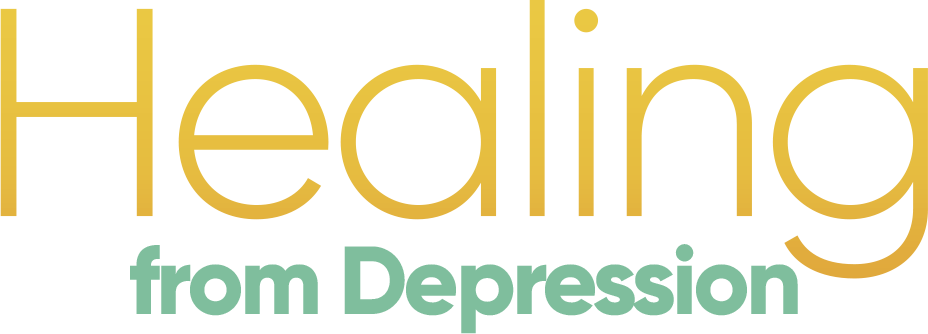
Managing Anxiety That
Often Accompanies Depression
“If you’re facing terror every day,
it’s gonna bring Hannibal to his knees.”
Jim Ballenger, a leading expert on anxiety
“There may be no rest for the wicked,
but compared to the rest that anxious people get,
the wicked undoubtedly have a pastoral life.”
Russell Hampton, The Far Side of Despair
Although no one knows exactly why, a great number of depressions are also accompanied by anxiety. In one study, 85 percent of those with major depression were also diagnosed with generalized anxiety disorder while 35 percent had symptoms of a panic disorder. Other anxiety disorders include obsessive-compulsive disorder and post-traumatic stress disorder (PTSD). Because they so often go hand in hand, anxiety and depression are considered the fraternal twins of mood disorders.
Believed to be caused in part by a malfunction of brain chemistry, generalized anxiety is not the normal apprehension that one feels before taking a test or awaiting the outcome of a biopsy. A person with an anxiety disorder suffers from what President Franklin Roosevelt called “fear itself.” For a reason that is only partially known, the brain’s fight-or-flight mechanism becomes activated, even when no real threat exists. Being chronically anxious is like being stalked by an imaginary tiger. The feeling of being in danger never goes away.
Even more than the depression, it was my anxiety and agitation that became the defining symptoms of my illness. Like epileptic seizures, a series of frenzied anxiety attacks would descend upon me without warning. My body was possessed by a chaotic, demonic force which led to my shaking, pacing and violently hitting myself across the chest or in the head. This self-flagellation seemed to provide a physical outlet for my invisible torment, as if I were letting steam out of a pressure cooker.
Being both anxious and depressed is a tremendous challenge. Clinicians have observed that when anxiety occurs “comorbidly” with depression, the symptoms of both the depression and anxiety are more severe compared to when those disorders occur independently. Moreover, the symptoms of the depression take longer to resolve, making the illness more chronic and more resistant to treatment. Finally, depression exacerbated by anxiety has a much higher suicide rate than depression alone. (In one study, 92 percent of depressed patients who had attempted suicide were also plagued by severe anxiety.*) Like alcohol and barbiturates, depression and anxiety are a deadly combination when taken together.
Fortunately, over 60 percent of major depressions are accompanied by varying levels of anxious feelings and behavior. (During my illness, my extreme anxiety interfered with my recovery and increased the risk of suicide.) Here are some techniques that are commonly used to treat mild to severe anxiety.
1) Medications. The medications most often used to treat anxiety are a class of drugs known as benzodiazepines (also called “minor tranquilizers”). These include Xanax, Ativan and Klonopin. The main problem with these substances is their potential for tolerance, physical dependence, and the likely recurrence of panic and anxiety symptoms when the medication is stopped. Hence, they are best used for treating short-term anxiety and panic. Because anxiety is so often associated with depressive disorders, it is essential to treat the underlying depression along with the anxiety disorder. When the depression is healed, symptoms of anxiety often diminish.
For some people, the herb Kava provides relief from anxiety without the problem of addiction. Click here to learn more about Kava, one of the natural alternatives to Prozac.”
2) Exercise and relaxation techniques. Because anxiety clearly has a physical component (especially when it manifests as a panic attack), techniques for relaxing the body are an important part of the treatment plan. These include abdominal breathing, progressive muscle relaxation (relaxing the body’s muscle groups) and biofeedback. You can learn these practices from any mental health professional who teaches relaxation or stress reduction. Regular exercise also has a direct impact on several physiological conditions that underlie anxiety. Exercise reduces skeletal muscle tension, metabolizes excess adrenaline and thyroxin in the bloodstream (chemicals which keep one in a state of arousal) and discharges pent-up frustration and anger.
3) Cognitive-behavioral therapy. Cognitive-behavioral therapy is a psychotherapy that helps you to alter anxious self-talk and mistaken beliefs that give the body anxiety-producing messages. For example, saying to yourself, “What if I have an anxiety attack when I’m driving home?” will make it more likely that an attack will ensue. Overcoming negative self-talk involves creating positive counter statements such as “I can feel anxious and still drive,” or “I can handle it.” What often underlies our negative self-talk is a set of negative beliefs about ourselves and the world. Examples of such mistaken beliefs are, “I am powerless,” “Life is dangerous,” and “It’s not okay to show my feelings.” Replacing these beliefs with empowering truths can help to heal the roots of anxiety (see the chart on cognitive distortions at the end of this section).
4) Monitoring diet and nutrition. Stimulants such as caffeine and nicotine can aggravate anxiety and leave one more prone to anxiety and panic attacks. Other dietary factors such as sugar, certain food additives and food sensitivities can make some people feel anxious. Seeing a nutritionally oriented physician or therapist may help you to identify and eliminate possible offending substances from your diet. He or she can also help you to research supplements and herbs (e.g., GABA, kava, B vitamins, chamomile and valerian teas) that are known to calm the nervous system.
If you are suffering from a serious anxiety disorder, you may want to locate a clinic in your area that specializes in the treatment of anxiety. Your local hospital or mental health clinic can give you a referral. In addition, you may wish to call (800) 64-PANIC to receive helpful material from the National Institute of Mental Health.

